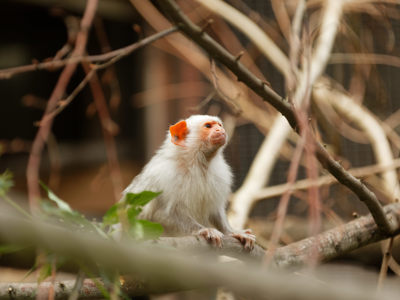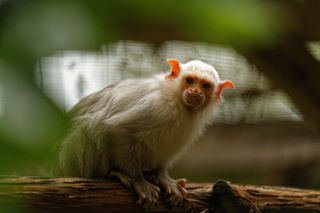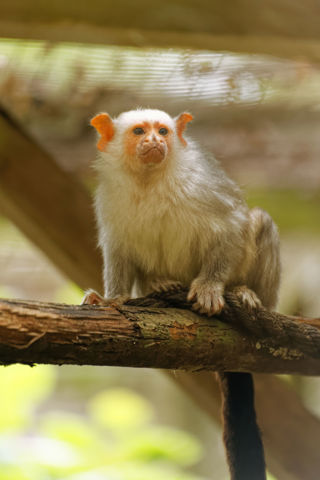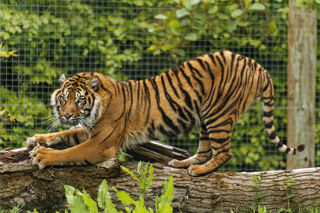
Silvery marmoset
Silvery marmosets are New World monkeys, a term describing monkeys from South and Central America. The silvery marmoset has a silvery white body, a dark tail and bare ears and face. Like all marmosets and tamarins they have claws on their fingers rather than the nails common to all other primates (though they still have nails on their thumbs). This helps them grip the bark of the trees they climb.

Vocal communication is important for this species. They have an excited call, ‘tsik’, and a different call for playing, ‘ee-ee’, to their trilling alarm call. When threatened silvery marmosets lower their eyebrows and make smacking noises with their lips. They also communicate through scent, using it to mark territory and to identify individuals.
Silvery marmosets live in groups of 4-11 individuals comprised of a breeding male, a female and their offspring. The female will give birth to twins or, in rare cases, triplets. Offspring are weaned by six months of age and sexually mature at two years old.

This species eats a wide variety of food, including fruit, tree sap and small animals. Common to all marmosets they have specialised teeth and behaviours to access tree sap as a food source.
This species is classified by the IUCN as Least Concern because they are able to live in degraded forest and have high populations in some areas. However, habitat destruction for agriculture has become a serious threat. This destruction has fragmented their population and reduced the movements of individuals putting the species at risk.
Key Facts:
Conservation Status: Least Concern
Distribution: Brazil
Habitat: Tropical Forest
Diet: Animals, Fruit, Gum, Invertebrates
Height: 20 – 30cm
Weight: 250 – 450g
Gestation: 145 days
No. of young: 2 – 3
Life Span: Unknown

SUPPORT OUR ANIMALS
If you're looking for an alternative way to donate to Twycross Zoo, you can help support our animals and our zoo keepers by purchasing something from our Amazon Wishlist!
Updated regularly by our zoo keepers, the items on the list help to provide enrichment for our animals and keep their habitats well maintained.
Every donation helps us as a conservation charity.
